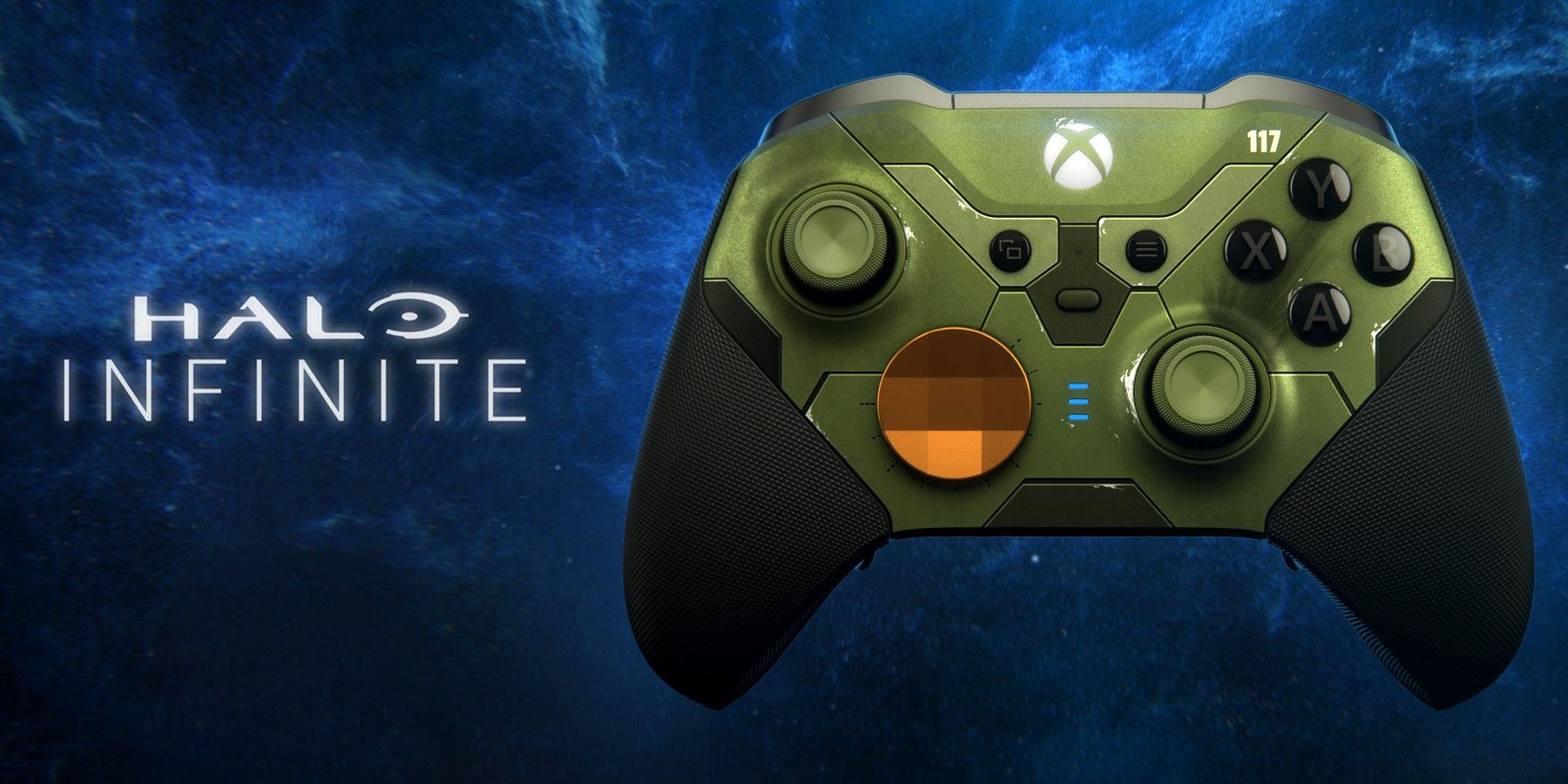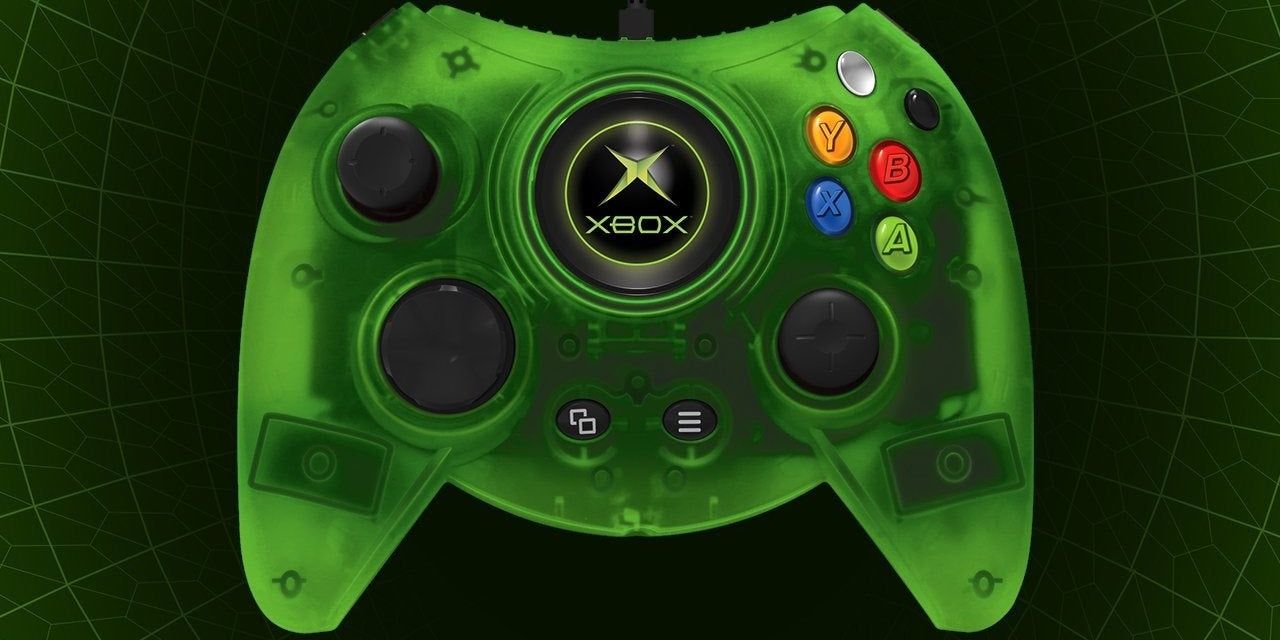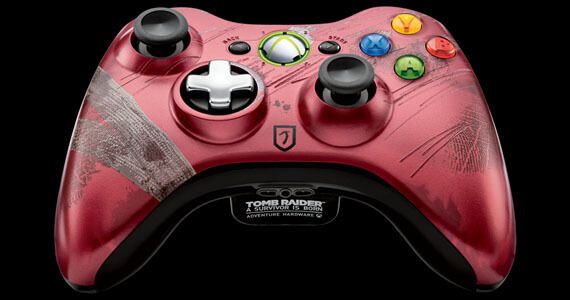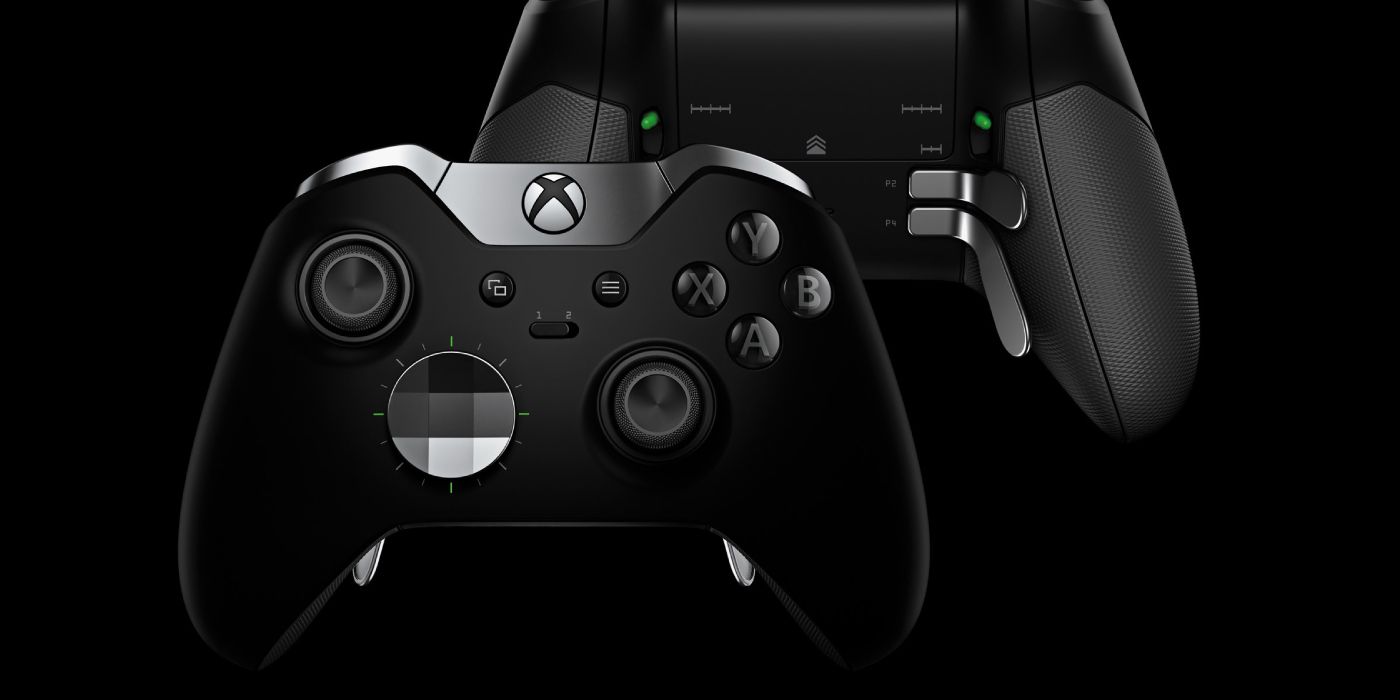By the time Microsoft released the original Xbox in 2001, the video game market was already dominated by Nintendo and Sony, with the Nintendo 64 and PlayStation battling it out to determine which console manufacturer was the greatest. The original Xbox had a lot to prove; Microsoft was great at making PCs, but could it do the same in the home console market?
Flash forward 20 years, and Xbox has managed to not only run in the same race as its original competitors, but overtake them in some ways. While Xbox has had to adapt its approach to the market with each new console iteration, there is one element that has always stayed pretty much the same: The controllers.
Xbox: The "Duke" of Video Game Controllers
The original Xbox controller is somewhat infamous in the video game world. Lovingly nicknamed "The Duke," the original Xbox's first controller is ridiculously big and unwieldly. Designed by a developer for Xbox, Seamus Blackley, the controller was heavily criticized from the moment it was unveiled to the public. Both critics and players detested the design, with many pointing to the controller's massive frame and dense button layout, making it difficult to hold, as well as tricky to use. The grips of the controller were also positioned awkwardly, jutting out at an angle that didn't feel natural to hold and making the analog sticks tough to maneuver.
In just one year, Xbox had revised their controller design significantly. This new controller was named the "Controller S" and gave players their first glimpse at the future of Xbox controllers. The Controller S was slimmed down dramatically, with the grips now appearing slightly more bulky, but refined to be more ergonomic and easy to hold.
Button placement was completely revised, with the face buttons now appearing in the iconic diamond shape (inspired by the original SNES controller,) and D-Pad being positioned further away from the analog sticks. The controller was an extreme improvement over The Duke, so much so that the Controller S design really wouldn't be changed much at all for Xbox's future console iterations.
Xbox 360: The Ergonomic and Practical Controller
If the original Xbox made a name for the company, then the Xbox 360 engraved that name in the minds and hearts of gamers around the world, and its incredibly ergonomic and practical controller certainly had a hand in this. Using the groundwork created by the Controller S, the Xbox 360 pad improved upon its predecessor in several small, but key ways. The size of the controller was once again pared down a little, giving the controller a more lightweight feel, but still retaining that comfort by keeping the grips basically the same.
While the placement of the analog sticks, the D-Pad, and the face buttons were kept largely the same, the "Start" and "Back" buttons were shifted to the center of the controller. Along with these buttons, an Xbox logo was also present. This small and metallic logo acted as the "Home" or "Guide" button for the controller, being used to navigate the Xbox 360's menus. The "Black" and "White" buttons of the Controller S were changed to shoulder buttons, referred to as "Bumpers."
The Xbox 360 controller also contained a 2.5mm TRS connector, which opened the floodgates for both helpful and pointless accessories. One of the more popular 360 controller add-ons was the Chatpad, a tiny keyboard used for online messaging. This is also the true start of the "Limited Edition" controller era, where countless versions and re-colors of the same controller were released to coincide with new game releases or promotions. Although the N64 had a ton of different variations on controllers, nothing matches the sheer number of Xbox 360 controller iterations.
Xbox One: The Best of The Best
The latest Xbox controller encompasses the phrase "if it ain't broke, don't fix it." The Xbox One controller is essentially, again, just a refined version of that original Xbox 360 controller. The button layout stayed practically the same, with only the Guide button being moved, now appearing between the bumpers as opposed to below them.
The overall design remains fairly unchanged, with only the angles of the grips and the smoothed out battery pack being the only real noticeable changes. The bumper buttons were tweaked along with the analog sticks to give the controller a more mechanical feel. Vibration technology was also incorporated into the controller's triggers, which were also made slightly bigger for this controller.
The Xbox One's controller design was so sleek, in fact, that it's still being used for the Xbox Series X and S, along with a few hardware improvements. The new set of Series X/S controllers have integrated Bluetooth and something called "Dynamic Latency Input." This essentially matches the controller's inputs to the game's current framerate, meaning that input lag is less likely to occur. The D-Pad of this controller is also a little different from previous models, appearing more like a concave circular dish, like the Death Star's firing array. A "Share" button has also been added to the center of this controller model.
Along with the mainline series of controllers, Xbox also released the Elite series of controllers. These price-y premium models are designed to be used by the "elite gamer," with the kit coming with a range of customizable parts such as back-paddles, multiple analog sticks, and different D-Pad designs. Once installed into the controller, these parts can be further customized with software, allowing the sensitivity of the sticks and triggers to be adjusted and the button mapping to be changed. A second revision of the Elite controller was released in 2019, this time coming with rubber grips, Bluetooth, and analog sticks with tension that could be adjusted.
While Xbox may have found its winning formula years ago, it's not afraid to try new things and help out its community. Xbox released the Adaptive Controller in 2018, a gamepad designed to be used by those with disabilities of all types. The controller has two large pads that can be mapped to any button on an Xbox controller. A D-Pad and various Options buttons are present on the left side of the controller. Although this is an official Xbox product, Phil Spencer (the head of Xbox) has been very open about sharing this technology with other console manufacturers in order to keep games as accessible as they can be. It seems fair to say that despite knocking it out of the park consistently with their controller design, Xbox is always willing to adapt and change its product to meet the gamers' needs and wants.




